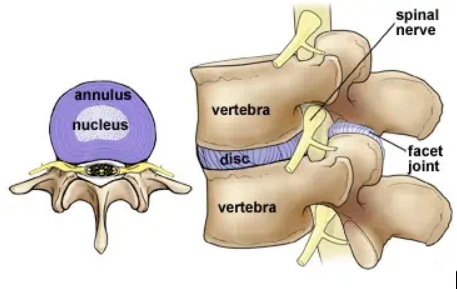Do You Have A Wry Neck?
Woke up this morning with your neck feeling stuck in one position? There’s a chance that you might have a wry neck.
Wry neck, also known as torticollis (for babies and infants), is a condition where one side of the neck suddenly becomes extremely painful and stiff when trying to move in one or more directions.
The most common scenarios for a wry neck is from either waking up with it, or following a sudden jerky movement.
Symptoms of wry neck
Loss of movement: you may be unable to turn your neck a certain way due to pain or stiffness. The neck might be held in a slightly bent position away from the side of pain.
Localised pain in the middle or side of the neck
Tight neck muscles
There are 2 main causes for a wry neck in youth and adults
1. Locked Facet Joint
Facet joints are located on the sides of the neck and allow for neck rotation and side bending. Sometimes by simply sleeping in an awkward position or performing a quick jerky movement can cause the tissues of the facet joint to become irritated and “lock up”. The surrounding structures can also begin to spasm, further increasing the pain and stiffness of the neck. The pain is usually sharp in nature and doesn’t travel further than the shoulder blade.
2. Discogenic Irritation
Between the vertebra there are spinal discs that help with shock absorption to reduce stress on the spine. These intervertebral discs can sometimes bulge or tear under stress almost like a small sprain, therefore causing inflammation and swelling, putting pressure on the surrounding structures and nerves within the neck. There are many nerves that cross through the spine, therefore it can explain why movement can be very painful.
Movement is more limited by pain, not mechanically blocked as in the facet theory. This type of wry neck usually comes on over a period of time (more gradual onset) and is not as sudden. Symptoms of discogenic wry neck can radiate into the arm and occasionally people may experience pins and needles or numbness.
So, are all neck pains wry necks?
Not quite, and that’s where Physios come in. The sources of neck pain could be from but not limited to:
Spinal fractures
Nerve root irritation
Whiplash injury
Cervical disc injury
Headache (tension/cervicogenic)
Referred pain
Bone pain
What does the evidence say?
There has been extensive research on Physio interventions for pain reduction on neck stiffness.
The general consensus is that manual therapy achieves a faster reduction in pain perception than therapeutic exercise. Therapeutic exercise reduces disability faster than manual therapy. (Bernal-Utrera, C. et al)
There is also moderate quality evidence to support manual therapy combined with exercise for pain reduction and improved quality of life over manual therapy alone for chronic neck pain (Miller, J. et al)
Final Thoughts
At Physio Solutions Merrylands, our goal is to help you overcome pain and move better!
Your therapist will diagnose what type of neck pain you have and create a tailored treatment approach to address the issue(s). This usually begins with pain reduction interventions followed by strategies to help increase neck movement.
Your physiotherapist can also help you become aware of the factors that contribute to neck pain, so that you can avoid and manage the problem in the future.
Treatment may include
Manual therapy (eg. soft tissue massage, dry needling, cupping)
Gentle mobilisations of neck joints
Manipulation if necessary
Advice on ergonomics, such as sitting posture, sleeping positions and lifting postures
Neck exercises and stretches
Postural Taping
Do you have neck pain that needs to be addressed? Book Now or give us a call to arrange an appointment.
Resources:
Cameron, D., Fite, J., Purkey, B., Winkelhaus, J. (2023). Adult-onset Idiopathic Torticollis. Retrieved from: https://www.physio-pedia.com/Adult-onset_Idiopathic_Torticollis
Kanga, I., Severn, M. (2017). Manual Therapy for Recent - Onset or Persistent Neck Pain: A Review of Clinical Effectiveness and Guidelines.
Retrieved from: https://www.ncbi.nlm.nih.gov/books/NBK525853/
Bernal-Utrera, C., Gerez, J., Lazo, E., Blanco, C. (2020). Manual therapy versus therapeutic exercise in non-specific chronic neck pain: a randomized controlled trial.
Retrieved from: https://trialsjournal.biomedcentral.com/articles/10.1186/s13063-020-04610-w
Miller, J., Gross, A., D’Sylva, J., Burnie, S., Goldsmith, C., Graham, N., Haines, T., Bronfort, G., Hoving, J. (2010). Manual therapy and exercise for neck pain: a systematic review
Retrieved from: https://pubmed.ncbi.nlm.nih.gov/20593537/
Sterling, M., Zoete, R., Coppieters, I., Farrell, S. (2019). Best Evidence Rehabilitation for Chronic Pain Part 4: Neck Pain
Retrieved from: https://www.ncbi.nlm.nih.gov/pmc/articles/PMC6723111/





